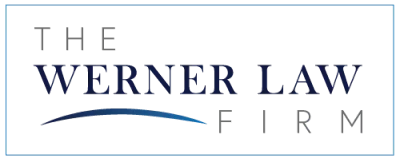
Menu

Most people are intimately familiar with the concept of ownership, from buying a brand-new car to getting a kitchen appliance. But there are many ways of owning something, with distinctions to be made between different kinds of ownership, and legal proofs to determine whether you truly are an owner or not.
For example, say you buy a building but have no documentation for it – i.e., no deed – then you have not assumed legal ownership of the property. Proof of ownership is more than just a piece of paper. Such transactions must be witnessed, documented, and ultimately the change of ownership must be locally notarized. Otherwise, anyone could forge a document claiming ownership of your new acquisition, and you would be legally defenseless.
The ownership of property, to begin with, can be defined in two ways:
Understanding the different forms of ownership that you can exercise over these two types of property is important for your estate plan. After all, when you pass away, your estate plan is meant to help detail how you want your property to be distributed. But depending on the property and how it is owned, the specifics of what you can distribute – and how you can distribute it - change. Here's what you need to know.
Ownership is legally enforceable, but only if the owner has the necessary claim, title, or other valid proof of ownership. You can own property and still owe on it – for example, if you bought a home but then mortgaged it for a loan, then you are still the legal owner, even though the lender has the power to redeem your home if you fail to pay off the loan.
However, leasing a home is akin to renting it – both options do not give you ownership over the home. Lease-to-own homes still put you in the position of leasing a property until the owner eventually transfers ownership to you – until then, you do not own the home, but you do possess exclusive rights to it. As such, you can make use of a property as though it were your own without being its legal owner, to a degree, and only through certain contracts.
Understanding how you own or take control of the things in your life is important, because it dictates how they would eventually transfer to your children when you pass away. For example – you may be an owner of a property, but your form of ownership will wildly change how it might transfer over to your loved ones.
The first and simplest form of ownership is individual ownership. This simply means you paid for the property and it is yours. If you own a home, the deed would be in your name only. This goes for other forms of property as well, including bank accounts.
Anything in individual ownership will go through probate, the process by which a court legitimizes and oversees the execution of a will, or the general distribution of an estate. However, you can bypass the process through certain estate planning tools. For example, an account that has been marked as payable on death will empty out into the pockets of whomever you listed as your beneficiaries.
Properties can also be transferred upon death, through a deed with a TOD. This includes real estate, within certain limits. For example, in California, you cannot use a TOD for anything larger than a single-family home, condominium unit, or 40 acres of agricultural land.
Other forms of ownership are a bit more complicated, as you do not have full control. In California, community property refers to property jointly owned by spouses – if one dies, full ownership transfers over to the remaining spouse.
Community property also refers to anything else that is owned while married. This means your spouse is entitled to one half of your income, pension, and debts. In a divorce, such property must be divided. In other states, this is also known as tenancy by the entirety.
You can also be a co-owner to a property outside of marriage. Most commonly, you own an equal share of property owned by one or more other persons, and if one of you passes away, their share is divided equally among the survivors. This is also known as joint tenancy with right of survivorship. The alternative is tenancy in common, in which several owners have the right to use the property, and the right to sell or transfer their share of ownership at any time, or as part of their estate after death.
You do not have to own property to control it. Buying property in the name of your company means the property is in the company’s name, but if you control the company, you control the property – and can sell or rent it out for profit. This also subjects you to a lower property tax rate, provided your company is an LLC, or a limited liability company. This can be a complicated process, and it does have its drawbacks, as well.
Another way of avoiding the cons of ownership while maintaining the pros of living in property you control is through trusts. Revocable living trusts allow you to transfer ownership over your assets and property into a legal entity, with beneficiaries listed to take control over the contents of the trust when you pass away. This allows you to avoid probate and simplify the inheritance process.
An irrevocable living allows you to protect your assets from creditors and remove the value of the trust from your estate tax exemption, at the cost of losing control over the property. This may be an option for property you no longer wish to move around or live in until you pass away.
Ultimately, with TODs, PODs, trusts, and wills, you can minimize the losses your estate will take while taking advantage of the different ways you own your property. Knowing whether your property is community property, jointly owned, or owned as tenants in common allows you to make decisions accordingly and build a better estate plan.
Founded in 1975 by L. Rob Werner and serving California for over 48 years, our dedicated attorneys are available for clients, friends, and family members to receive the legal help they need and deserve. You can trust in our experience and reputation to help navigate you through your unique legal matters.
Whether you need help creating a living trust or navigating probate, our living trust law firm's compassionate team of estate planning lawyers and probate lawyers are here to help you and ready to answer your questions.
Our goal is to make your case as easy as possible for you. Hiring a lawyer can be a daunting task, but it doesn’t have to be. From the moment you contact our firm, through the final resolution of your case, our goal is to make the process easy and understandable. We cannot change the fact that probate is a long and complicated process, but through our Werner Law Firm Difference, we strive to go out of our way to keep you informed of your case through every step of the way. We are constantly refining our processes and procedures for a more streamlined and calm client experience. Our goal is to have you feel like a burden was lifted from your shoulders, and that we made the whole process an easy one
If you're dealing with a legal matter, we urge you to schedule a free initial appointment today and join the many satisfied clients who have contacted Werner Law Firm.

23 Corporate Plaza Dr., Suite 150
Newport Beach, California 92660
